Ra
Ra, the radiant deity of ancient Egypt, held sway over the celestial sphere as the god of the sun, casting his luminous gaze upon the earth below.
Beyond his celestial dominion, Ra also embodied the principles of order and kingship, serving as the divine arbiter of cosmic harmony and the rightful sovereignty of earthly rulers. As the embodiment of the sky itself, Ra commanded the heavens with majestic authority, bestowing light and life upon the world below. With each dawn, Ra’s golden chariot traversed the firmament, illuminating the earth and dispelling the shadows of darkness.
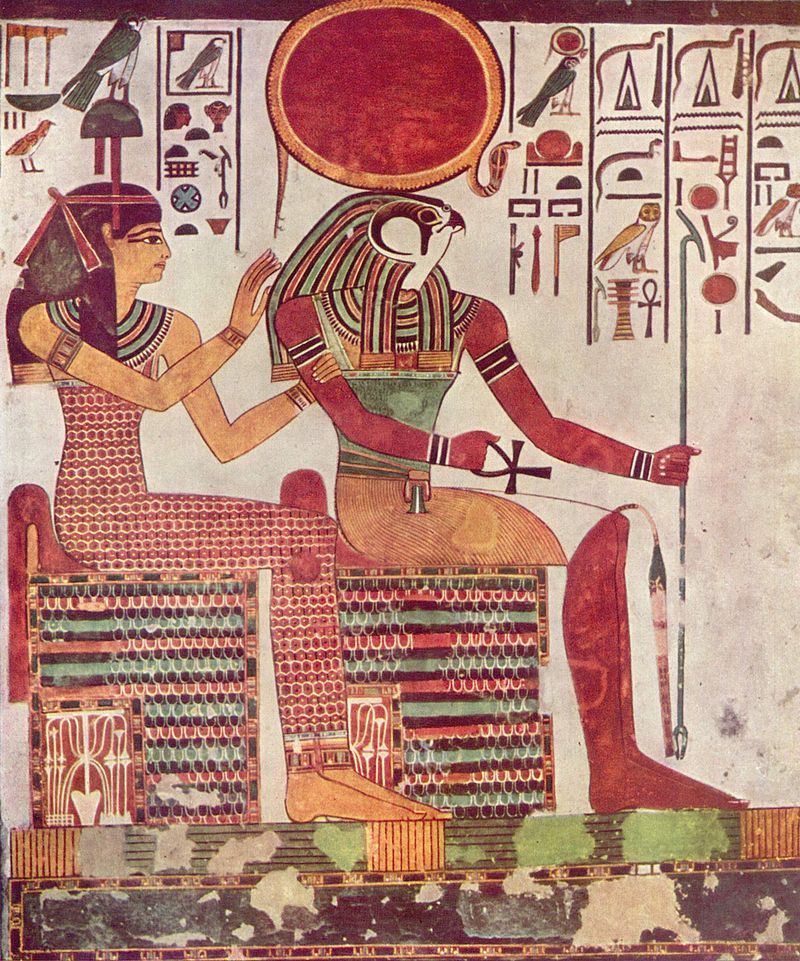
Symbols: Sun disk, falcon
Cult Centre: Heliopolis
Consort: Hathor, Bastet and Sekhmet
Children: Shu, Tefnut, Hathor, Sekhmet, Bastet, Satet, Anhur
Greek equivalent: Zeus
Roman equivalent: Jupiter
Ra was portrayed as a falcon and shared characteristics with the sky god Horus. All forms of life were believed to have been created by Ra. In some accounts, humans were created from Ra’s tears and sweat, hence the Egyptians call themselves the ‘Cattle of Ra’.
Creator God
The ancient Egyptians revered the sun as the ultimate bestower of life, attributing to it the power to nurture crops and sustain existence itself. In their eyes, the sun was not merely a celestial body but a divine entity worthy of worship. His radiance symbolized not only warmth and growth but also the very essence of existence. As the principal deity, Ra wielded immense influence over the people, earning him the title of “King of the Gods” and making him one of the most venerated figures in Egyptian religious belief.
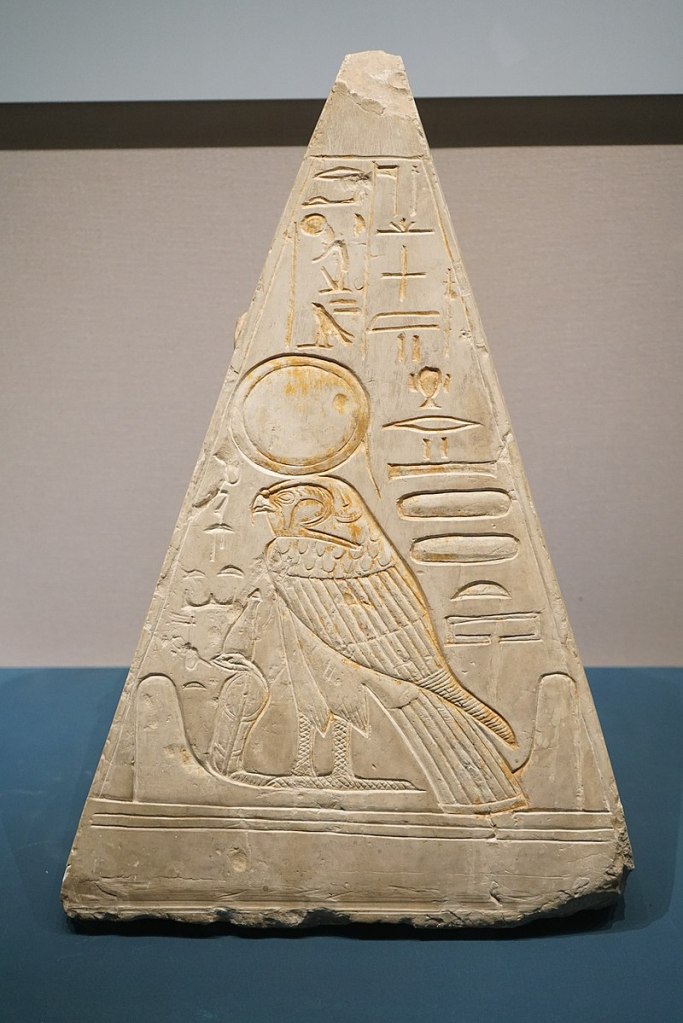
According to ancient lore, Ra fashioned all living beings by summoning them into existence through the utterance of their secret names, a testament to his divine power and authority. Some accounts even suggested that humans themselves were formed from Ra’s tears and sweat, underscoring their intimate connection to the sun god and their divine origin.
Manifestations of Ra’s divine authority often materialized in the form of the Eye of Ra, symbolizing his omnipresent watchfulness and protective nature. Among his offspring were three powerful daughters—Bastet, Sekhmet, and Hathor—who embodied the wrathful aspects of the sun god and served as agents of his vengeance when provoked.
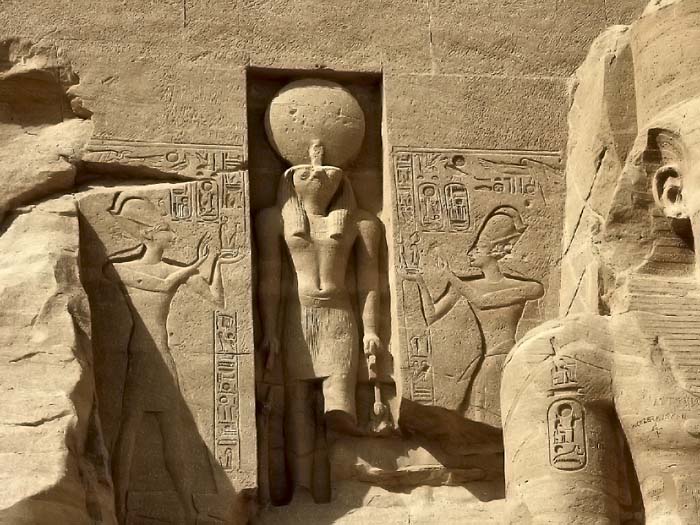
Underworld
Ra’s journey through the Underworld during the night hours was a central motif in Egyptian mythology, symbolizing the cyclical nature of life and the eternal renewal of the sun’s power. Guided by the night boat Mesektet, Ra traversed the realms of the Underworld, embarking on a transformative passage that would lead to his rebirth in the east at dawn. This nightly journey was not only a physical voyage but also a spiritual odyssey, representing the perpetual cycle of death and rebirth inherent in the natural world.
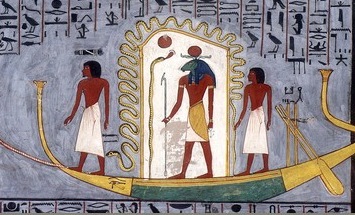
As Ra sailed through the Underworld, various gods and mythical creatures played pivotal roles in aiding him on his voyage. Set, the god of chaos and storms, confronted the malevolent serpent Apophis, who sought to thwart Ra’s journey and plunge the world into darkness. Set’s triumph over Apophis symbolized the eternal struggle between order and chaos, highlighting Ra’s role as a harbinger of light and life. Additionally, the protective deity Mehen stood guard against the monstrous forces that lurked in the depths of the Underworld, ensuring Ra’s safe passage and eventual return to the realm of the living.
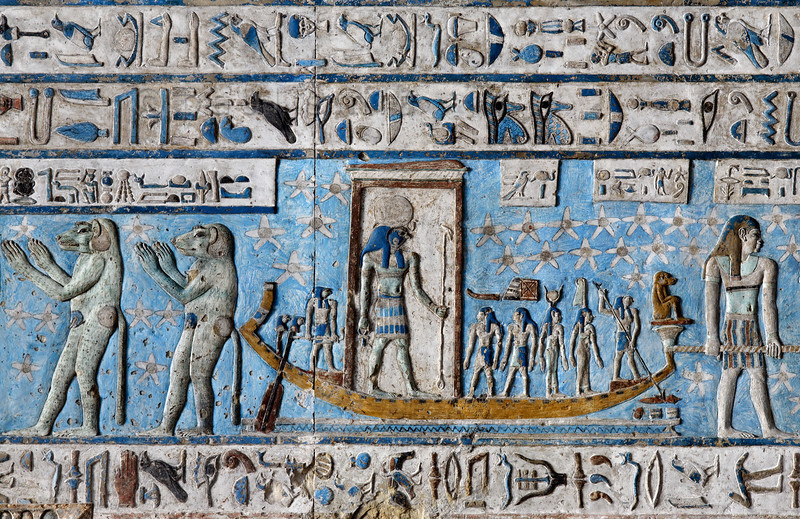


2. Relief of Rameses II making an offering to Ra and Nekhbet. (c) isawnyu
3. The sun god Ra is traveling across the sky in his solar barge, Temple at Dendera. (c) Paul Smit
